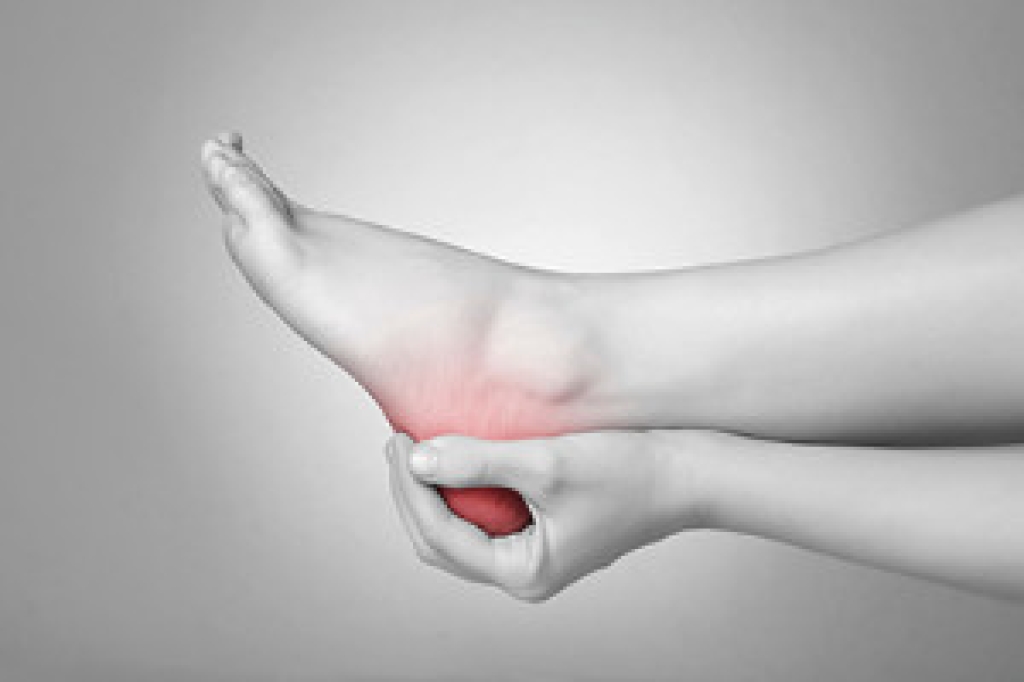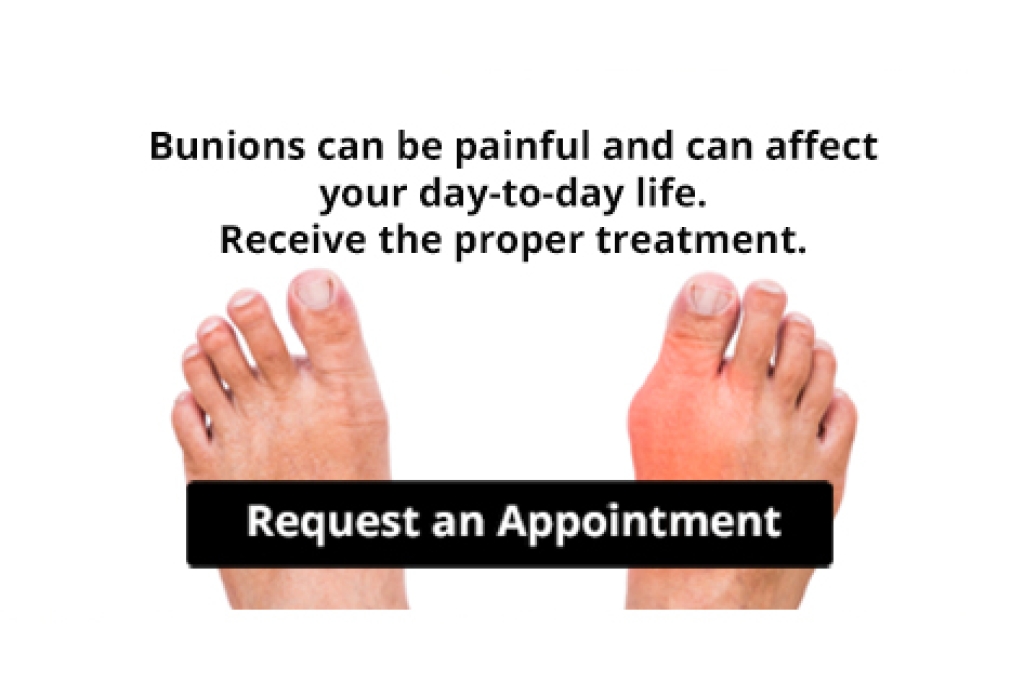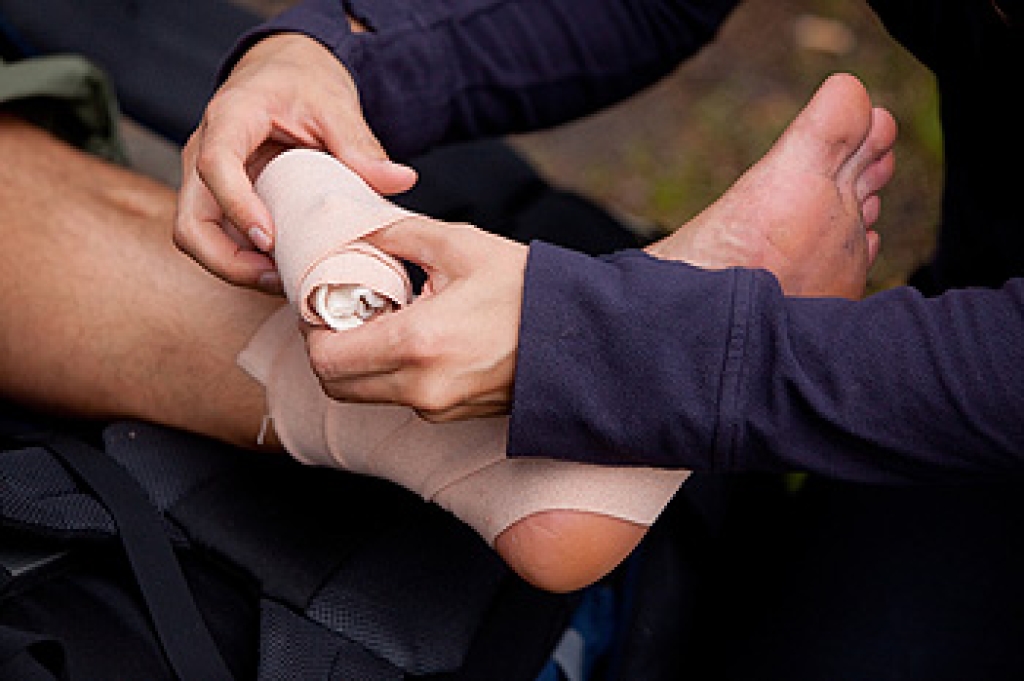Connect With Us
Blog
Blog
What Is Metatarsalgia?
 Metatarsalgia refers to any painful condition that affects the metatarsal region, or ball of the foot. Most commonly, the pain is a result of the metatarsal head (ball of the foot) becoming inflamed and putting more pressure on the bones at the front of the foot. Pain and inflammation in this area can also be a result of an existing bunion, overuse and excess pressure on the ball of the foot, aging, high arched feet, arthritis, gout, or diabetes. Being overweight can also place additional stress on the feet, as well as wearing high heels. Patients who are struggling with pain in the ball of the foot should be under the care of a podiatrist for treatment.
Metatarsalgia refers to any painful condition that affects the metatarsal region, or ball of the foot. Most commonly, the pain is a result of the metatarsal head (ball of the foot) becoming inflamed and putting more pressure on the bones at the front of the foot. Pain and inflammation in this area can also be a result of an existing bunion, overuse and excess pressure on the ball of the foot, aging, high arched feet, arthritis, gout, or diabetes. Being overweight can also place additional stress on the feet, as well as wearing high heels. Patients who are struggling with pain in the ball of the foot should be under the care of a podiatrist for treatment.
Foot Pain
Foot pain can be extremely painful and debilitating. If you have a foot pain, consult with Dr. Castillo from Bronx Foot Care. Our doctor will assess your condition and provide you with quality foot and ankle treatment.
Causes
Foot pain is a very broad condition that could be caused by one or more ailments. The most common include:
- Bunions
- Hammertoes
- Plantar Fasciitis
- Bone Spurs
- Corns
- Tarsal Tunnel Syndrome
- Ingrown Toenails
- Arthritis (such as Gout, Rheumatoid, and Osteoarthritis)
- Flat Feet
- Injury (from stress fractures, broken toe, foot, ankle, Achilles tendon ruptures, and sprains)
- And more
Diagnosis
To figure out the cause of foot pain, podiatrists utilize several different methods. This can range from simple visual inspections and sensation tests to X-rays and MRI scans. Prior medical history, family medical history, and any recent physical traumatic events will all be taken into consideration for a proper diagnosis.
Treatment
Treatment depends upon the cause of the foot pain. Whether it is resting, staying off the foot, or having surgery; podiatrists have a number of treatment options available for foot pain.
If you have any questions, please feel free to contact our offices located in Bronx, NY Yonkers, NY . We offer the newest diagnostic and treatment technologies for all your foot care needs.
Ankle Sprains and High School Sports
One in six of all high school sports injuries are sprained ankles, making them the most common injury among this age group. The site of most of these sprains is the anterior talofibular ligament (ATFL), which is the band of connective tissue on the outside of the ankle. One of the ways the ATFL can become sprained is when an athlete’s center of gravity shifts over the outside of the weight-bearing leg, which can cause the ankle to roll inward quickly. Sporting activities with the highest occurrence of ankle sprains are girls’ gymnastics, girls’ basketball, and boys’ basketball. If a child experiences one ankle sprain, they may be more at risk of a future ankle sprain, particularly if they are involved in a sport where there is repeated jumping and landing. Even though some people may not view ankle sprains as a serious or significant injury, it is important to seek professional treatment from a podiatrist to help the ankle heal properly and regain strength, while lessening the risk of re-injury.
The health of a child’s feet is vital to their overall well-being. If you have any questions regarding foot health, contact Dr. Castillo of Bronx Foot Care. Our doctor can provide the care you need to keep you pain-free and on your feet.
Tips for Keeping Children's Feet Healthy
- Make sure their shoes fit properly
- Look for any signs of in-toeing or out-toeing
- Check to see if they have Clubfoot (condition that affects your child’s foot and ankle, twisting the heel and toes inward) which is one of the most common nonmajor birth defects.
- Lightly cover your baby’s feet (Tight covers may keep your baby from moving their feet freely, and could prevent normal development)
- Allow your toddler to go shoeless (Shoes can be restricting for a young child’s foot)
- Cut toenails straight across to avoid ingrown toenails
- Keep your child’s foot clean and dry
- Cover cuts and scrapes. Wash any scratches with soap and water and cover them with a bandage until they’ve healed.
If you have any questions, please feel free to contact our offices located in Bronx, NY Yonkers, NY . We offer the newest diagnostic and treatment technologies for all your foot care needs.
Reduce Pain Caused by Sever’s Disease
 The painful foot condition known as Sever’s disease generally affects active children and adolescents between the ages of 8 and 14. The pain is said to increase during physical activity and can be felt in the bone at the back of the heel. This disease develops because of a growth spurt in which the bones grow faster than the muscles and tendons. That is why Sever's disease tends to occur in children and young teenagers, especially those who participate in running and jumping activities like basketball and soccer. One of the ways a podiatrist may relieve a portion of the pressure on the heel is by prescribing custom orthotics. Additionally, resting and icing the affected heel as well as performing gentle stretches may contribute to the pain subsiding. If your child is limping or complaining of heel pain, it is strongly suggested that you schedule an appointment with a podiatrist who can effectively diagnose and treat Sever’s disease.
The painful foot condition known as Sever’s disease generally affects active children and adolescents between the ages of 8 and 14. The pain is said to increase during physical activity and can be felt in the bone at the back of the heel. This disease develops because of a growth spurt in which the bones grow faster than the muscles and tendons. That is why Sever's disease tends to occur in children and young teenagers, especially those who participate in running and jumping activities like basketball and soccer. One of the ways a podiatrist may relieve a portion of the pressure on the heel is by prescribing custom orthotics. Additionally, resting and icing the affected heel as well as performing gentle stretches may contribute to the pain subsiding. If your child is limping or complaining of heel pain, it is strongly suggested that you schedule an appointment with a podiatrist who can effectively diagnose and treat Sever’s disease.
Sever's disease often occurs in children and teens. If your child is experiencing foot or ankle pain, see Dr. Castillo from Bronx Foot Care. Our doctor can treat your child’s foot and ankle needs.
Sever’s Disease
Sever’s disease is also known as calcaneal apophysitis, which is a medical condition that causes heel pain I none or both feet. The disease is known to affect children between the ages of 8 and 14.
Sever’s disease occurs when part of the child’s heel known as the growth plate (calcaneal epiphysis) is attached to the Achilles tendon. This area can suffer injury when the muscles and tendons of the growing foot do not keep pace with bone growth. Therefore, the constant pain which one experiences at the back of the heel will make the child unable to put any weight on the heel. The child is then forced to walk on their toes.
Symptoms
Acute pain – Pain associated with Sever’s disease is usually felt in the heel when the child engages in physical activity such as walking, jumping and or running.
Highly active – Children who are very active are among the most susceptible in experiencing Sever’s disease, because of the stress and tension placed on their feet.
If you have any questions, please feel free to contact our offices located in Bronx, NY Yonkers, NY . We offer the newest diagnostic and treatment technologies for all your foot and ankle injuries.
Foot Conditions That Can Develop From Standing
 Research has indicated a significant portion of the population stands for the majority of their work day. This can have an impact on the feet, and it can be beneficial to sit for short periods of time throughout the day. It may help to refrain from standing on hard surfaces, in addition to wearing shoes that fit correctly. It is important for shoes to have adequate room for the toes to move freely in, and it may be wise to consider wearing custom made orthotics. There are several foot conditions that can develop from standing on your feet for hours including bunions, joint fatigue, and swelling. Speaking with a podiatrist may provide you with information on how to avoid painful foot conditions while standing, and it is suggested that you schedule a consultation.
Research has indicated a significant portion of the population stands for the majority of their work day. This can have an impact on the feet, and it can be beneficial to sit for short periods of time throughout the day. It may help to refrain from standing on hard surfaces, in addition to wearing shoes that fit correctly. It is important for shoes to have adequate room for the toes to move freely in, and it may be wise to consider wearing custom made orthotics. There are several foot conditions that can develop from standing on your feet for hours including bunions, joint fatigue, and swelling. Speaking with a podiatrist may provide you with information on how to avoid painful foot conditions while standing, and it is suggested that you schedule a consultation.
While working on the feet, it is important to take the proper care of them. For more information about working on your feet, contact Dr. Castillo from Bronx Foot Care. Our doctor will treat your foot and ankle needs.
Working on Your Feet
Standing on your feet for long periods of time can cause stress and pain in your feet. Your whole body may experience change in terms of posture, back pain, bunions, callouses and or plantar warts. There are ways to avoid these conditions with proper foot care, smart choices and correct posture.
Positive Changes
Negative heeled shoe – Choosing this shoe type places the heel slightly lower than the ball of the foot. These are great for overall foot health. Find shoes that fit you correctly.
Go barefoot – Our feet were not designed to be enclosed for all hours of the day. Try to periodically expose your feet to air.
Eliminate Pain
Foot Exercises – Performing simple exercises, incorporating yoga and doing stretches are beneficial. This will allow increased blood flow to the area and muscles of the foot.
Achilles tendon – Stretching the foot out flat on the floor will relax the calf muscles and tendon. These exercises can be performed almost anywhere. Make sure you add these exercises to your daily regimen.
With a little bit of this information and knowing more about foot health, you will notice changes. Foot stretches and proper footwear will help with pain and prevent further issues.
If you have any questions please contact our offices located in Bronx, NY Yonkers, NY . We offer the newest diagnostic and treatment technologies for all your foot and ankle needs.
Blog Archives
- 2025
- 2024
- 2023
- 2022
- 2021
- 2020


